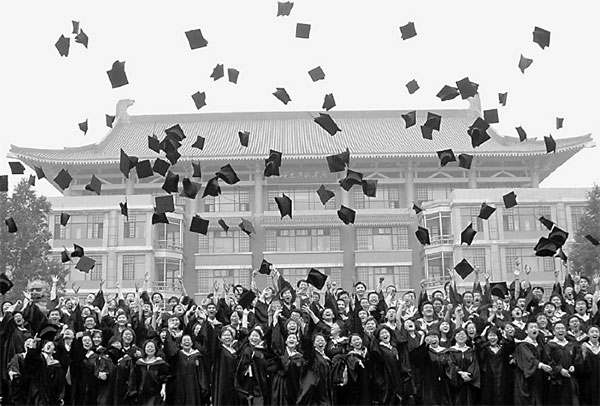The right lessons
Updated: 2016-03-09 08:01
By Mei Jia(China Daily USA)
|
|||||||||
A new book says that, while the higher education system has progressed in China in the past 30 years, it has declined in the US. Mei Jia reports.
Has China's higher education system succeeded in producing top talent for the fiercely competitive global market? The question tends to yield mixed responses from Chinese.
But Mark Ferrara, an associate professor of English at State University of New York, has a definitive answer: Higher education in China has been on the rise in the past three decades while there's been a "corresponding decline of it" in the United States.
His latest book, Palace of Ashes: China and the Decline of American Higher Education, recently published by Johns Hopkins University Press, is a comparative study of changing trends in higher learning in the two countries and it points to China's scale of development in the sector.
"In my view, the US remains ill-prepared for convergence in higher education and the race to establish research universities of 'world-class' standing," Ferrara tells China Daily in an e-mail. "China positioned itself to steadily catch and eventually surpass the US as an undisputed leader in international tertiary education."
Ferrara, in his 40s, has authored books based on the Chinese classic A Dream of Red Mansions and on US President Barack Obama. He has also taught in universities in China, South Korea and Turkey. Through the years, he has witnessed the sprouting of many new campuses in China.
"I was continually amazed to find sprawling new campuses outside of almost every Chinese city or town," he says. "China now boasts the largest higher education-delivery system in the world with upward of 30 million students, and it produces roughly 8 million graduates per year, about 5 million more than that in the US."
Some government efforts in China are also clearly visible, he says. For example, when he visited Fudan University in Shanghai to give a lecture on William Blake in 2012, he found a new and spacious humanities library that has a room with high-tech gadgets for global conferences in place of the "dark and dank" library he had seen there in the 1990s.
He estimated last year that China's GDP "would be $11 trillion" this year compared with $200 billion in 1980. He says that the country's major universities have also transformed "into serious contenders for the world's students, faculty and resources", especially in the years after 1978.
The country's various educational institutions hosted 85,000 students from more than 175 countries in 2002, and in 2004, the number was 110,000. It grew to nearly 250,000 in 2008.
"By 2007, China had become the fifth-ranked destination for international students as a result of educational reforms and increased interest in the Chinese language and culture worldwide."
The number of American students studying in China increased more than fivefold between 2000 and 2010, Ferrara writes in his new book.
The author compared China and the US because the countries are the world's two largest economies and have delivered higher education to a large number of students. In addition, they have shared "more political and economic interests" in recent years than was possible in the earlier decades.
In his book, which has a cover that presents a combination image of Harbin Engineering University today and a 1951 photo of Colorado State College of Education on fire, Ferrara examines the origins and development of modern universities in both countries and proposes to restore the "American palace".
"I wrote to alert readers to signs of decay in the American academia at a moment when countries around the globe are successfully investing in higher education to create economic growth and shared national prosperity," he says.
Ferrara is frank in saying that he uses China as a foil to show problems with the US' higher learning today. But he details key Chinese programs and the five-year plans in education, in an objective way to make Chinese readers understand his comparative study.
His book also offers his opinion on Chinese higher education. He believes Chinese educators are slowly learning how to teach their students to be more creative, and that Chinese education is deeply rooted in humanistic traditions while in the US he sees diminishing interest in humanities.

"The displacement of the liberal arts by business, science and engineering programs threatens to curb creative thinking," he says.
Sections of the US public are focused on the Chinese economy and have failed to notice the solid developments in higher education in China, he says.
There are other worthy books published in the US that also address the topic.
China's Rising Research Universities: A New Era of Global Ambition is written by University of California, Los Angeles education professor Robert Rhoads and his Chinese co-authors, Wang Xiaoyang, Shi Xiaoguang and Chang Yongcai. It offers four case studies to examine China's progress and fundamental changes in educational reforms.
"I don't necessarily agree with the conclusion that Chinese higher education is on the rise while the US is in decline," Rhoads tells China Daily in an e-mail. "Readers will get a sense of how far China has come but also how far it still has to go in my book."
To that, Ferrara says: "The gap between leading American and Chinese universities persists but it narrows every decade."
Hu Ruiwen, a member of the National Education Advisory Committee and former director of the Shanghai Academy of Educational Sciences, seems to agree with Rhoads.
Hu says that the country did successfully expand its higher learning in scale, but its top universities still need more time to compete with Ivy League institutions in the US.
"I'd say some of our universities are just too big to jump higher. The structure and management should be optimized," Hu adds.
Contact the writer at meijia@chinadaily.com.cn
|
Youngsters celebrate at their graduation ceremony at the Peking University in Beijing. The country boasts the world's largest higher education-delivery system, producing roughly 8 million graduates per year.Pang Zhengzheng / CFP |
(China Daily USA 03/09/2016 page10)

 Women in workplace 100 years ago
Women in workplace 100 years ago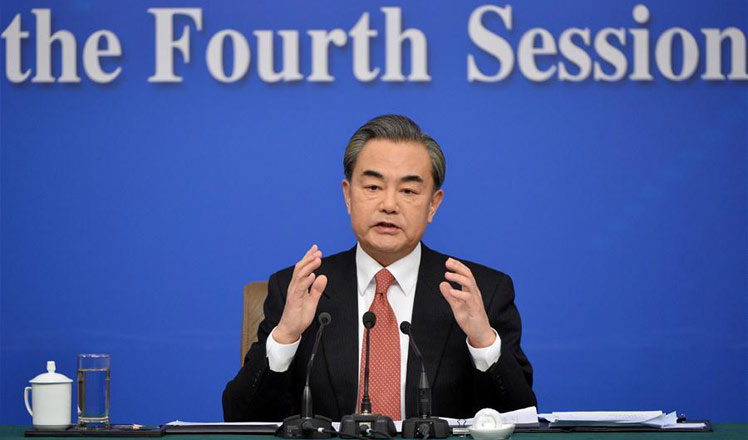
 Foreign Minister Wang Yi meets the press
Foreign Minister Wang Yi meets the press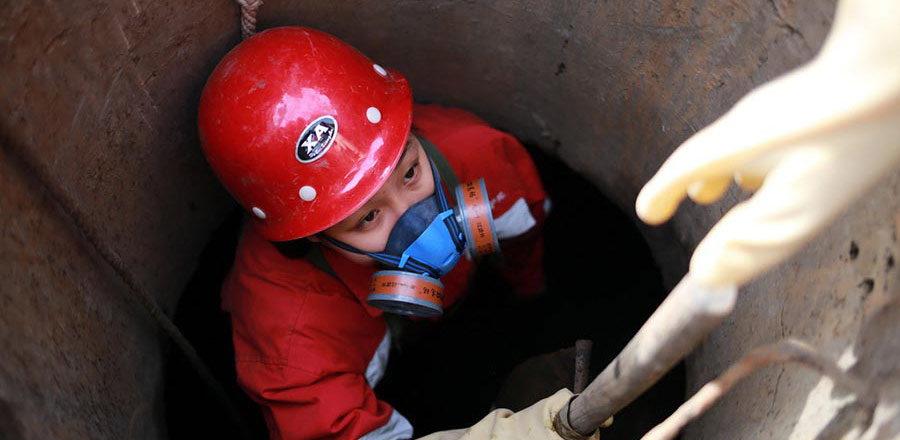
 Women who work underground to keep city clean
Women who work underground to keep city clean
 Students in traditional dresses celebrate Women's Day
Students in traditional dresses celebrate Women's Day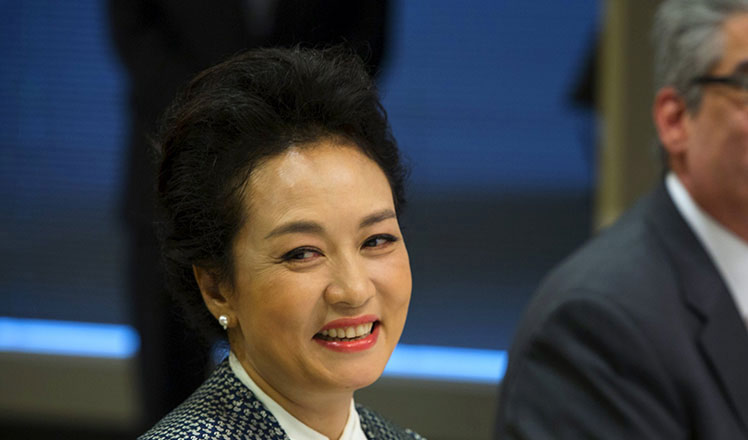
 'She' in China
'She' in China
 Temple fair with 700 years history staged in Henan
Temple fair with 700 years history staged in Henan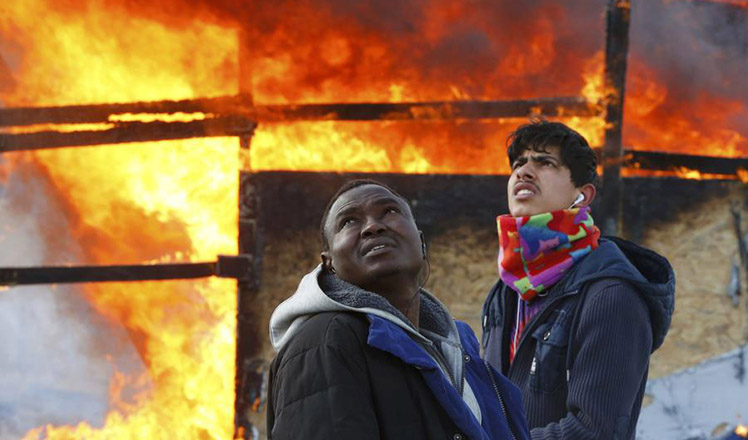
 World in photos: Feb 29 - Mar 6
World in photos: Feb 29 - Mar 6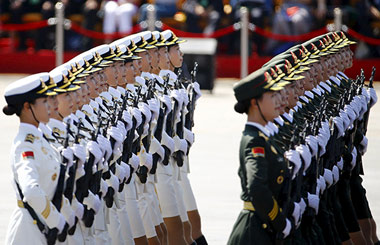
 International status is rising
International status is rising
Most Viewed
Editor's Picks

|

|

|

|
|
|
Today's Top News
What ends Jeb Bush's White House hopes
Investigation for Nicolas's campaign
Will US-ASEAN meeting be good for region?
Accentuate the positive in Sino-US relations
Dangerous games on peninsula will have no winner
National Art Museum showing 400 puppets in new exhibition
Finest Chinese porcelains expected to fetch over $28 million
Monkey portraits by Chinese ink painting masters
US Weekly

|

|
